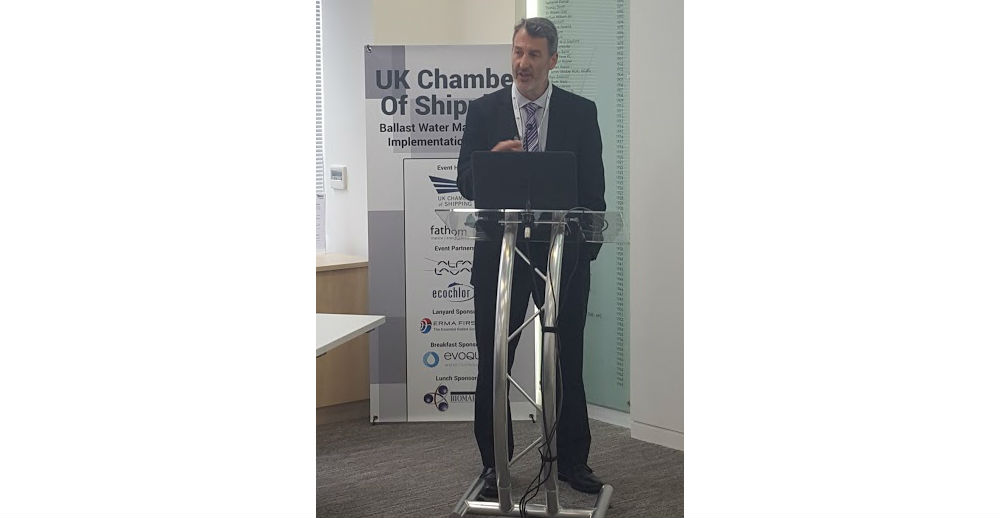Tim Fileman, Business Manager, Plymouth Marine Laboratory yesterday addressed the differences in sampling analysis of ballast water during the London Ballast Water Forum, the second being held in series of three hosted by the UK Chamber of Shipping in partnership with Fathom Maritime Intelligence.
Mr Fileman’s presentation saw him detail the differences in analysis, comparing indicative analysis with detailed analysis methods and outcomes. First he addressed the question of why sample? This is important to ensure compliance with the D1 standard (ballast water exchange and the volume of water to be replaced). Sampling is essential to providing evidence of the physical nature of the organisms and how the reduction of them, and hence the transfer of microorganisms and organisms to non-native environments, can benefit the environment and health of the ecosystem.
Throughout the presentation sampling protocols were addressed. Indicative sampling is one method. This method requires fewer skills and results can be obtained instantaneously, whereas the alternative detailed analysis method requires a higher skill set and gives direct counts of organisms remaining in the ballast water in order to establish compliance with the D2 standard on the amount of viable organisms left in the water following treatment.
Furthermore, although detailed analysis provides more detailed results, it takes longer to be carried out. While some can be done on board, many are taken away and analysed in the laboratory, therefore results cannot be obtained immediately. The ballasting period is the time/process where ship owners should be most concerned regarding the efficiency and compliance of their system.
Although indicative analysis can benefit a ship with a short turnaround time because of the speed at which results are generated compared with detailed analysis, the detailed analysis may help to gain a wider insight into the biology of the tank. Biology is not homogenous in the whole sample and therefore ascertaining distinct variations is key though sampling.
Mr Fileman also pointed out that with the current Guidelines, the problem lies in that ballast water may still be released if it hasn’t been treated properly, but this is not known until testing and until after it has occurred.
Ship Efficiency Review News
To contact the reporter responsible for this article, please email editor@fathom-mi.com































